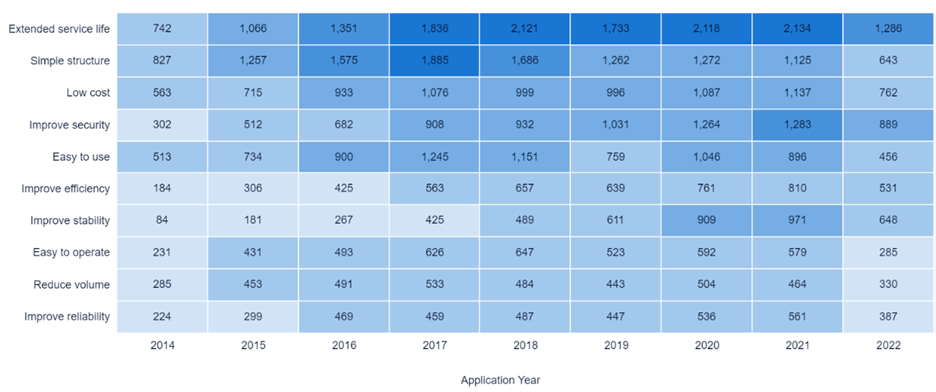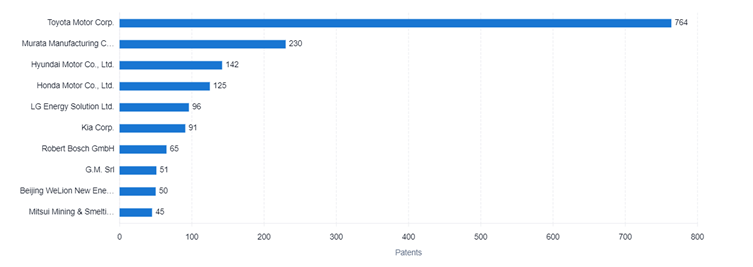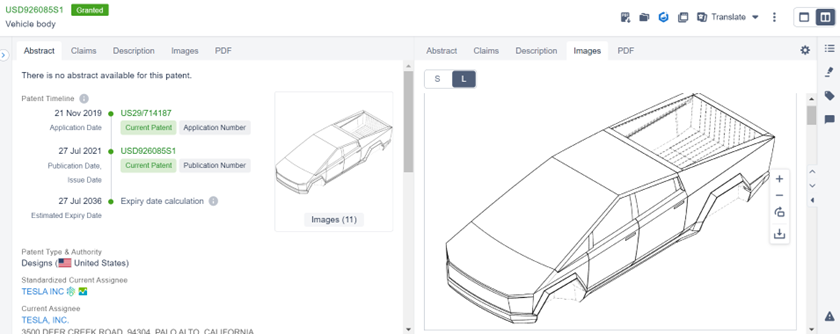4 Best Electric Vehicle Trends R&D Professionals
In 2022 a whopping 7.8 million electric vehicles (EVs) were sold worldwide, representing a 68% increase from 2021. This uptick helped electric vehicles achieve approximately 10% of the global automotive market share. While this may sound like a modest number, we are way ahead of schedule according to the projections made by the international energy agency, which predicted it would take until 2030 for EVs to reach between 7%-12% of global auto sales.
As EVs take the world by storm we are seeing elevated innovation in this sector. In this article, we’ll explore 4 electric vehicle trends R&D professionals need to know about.
What are Electric Vehicles?
Electric vehicles, also known as EVs, are vehicles powered by electricity stored in batteries or other energy storage devices. They use one or more electric motors to propel the vehicle, rather than an internal combustion engine that burns fossil fuels like gasoline or diesel.
They’re often touted as a cleaner and more sustainable alternative to traditional gasoline-powered vehicles, as they produce little or no emissions during operation, depending on the source of the electricity used to charge them. They’re also typically more energy-efficient than traditional vehicles, meaning they require less energy to travel the same distance.
Governments worldwide are introducing regulations to encourage EV adoption, motivated by various factors including to:
- Reduce greenhouse gas emissions from transportation and mitigate the impacts of climate change
- Reduce the dependence on foreign oil
- Improve energy security worldwide
With this pivot away from combustion engines, we’re even seeing luxury automotive companies turning towards EV technology. For example, Bentley has expressed plans to end production of its 12-cylinder engine by next April.
Misconceptions and Concerns Surrounding Electric Vehicles
There are a handful of misconceptions around EV functionality and operations that exist, despite an ever-growing market presence. Here are a few examples:
- EVs don’t have enough range: Many people believe that EVs don’t have enough range to be practical for everyday use. However, most modern EVs can travel well over 100 miles on a single charge, and some can go more than 300 miles.
- EVs are slow and boring: Some people assume that EVs are slow and lack the excitement and performance of gasoline-powered cars. However, some of the world’s fastest cars are now electric.
- EVs are expensive: While it’s true that some high-end models can be costly, there are also many affordable EVs on the market today. Additionally, the total cost of ownership for an EV is often lower than for a gas-powered car, as EVs require less maintenance, and fuel costs are lower.
- EVs aren’t as environmentally friendly as people think: Some critics argue that EVs aren’t as green as they’re made out to be. However, studies have shown that EVs produce significantly fewer emissions over their lifetime than gasoline-powered cars, even when taking battery production into account.
- There aren’t enough charging stations: Some people worry that there aren’t enough charging stations to support widespread EV adoption. While charging infrastructure is still developing, there are thousands of charging stations across North America and Europe, and many businesses and governments are investing in further expansion.
These misconceptions are slowly being dispelled as more people adopt EVs and realize their many benefits. Additionally, innovation is ongoing and tackling many of these main concerns, working to make EV technology more accessible and efficient than it already is. These breakthroughs are making EVs more practical, convenient, and appealing to consumers, and are helping to accelerate the transition to a more sustainable transportation system.
Top Electric Vehicle Trends
Electric Vehicle Trend #1: Battery technology
Most EVs today are powered by lithium-ion batteries, a decades-old technology that’s also used in laptops and cell phones. After many years of development, prices have gone down and performance has improved, but there is still room for improvement via new technologies.
The technical problems for electric batteries most often being tackled can be seen below. Some of the key problems tackled include extended service life, lower cost, and improved efficiency, security, and stability.

One of the most promising developments in EV battery technology is the use of solid-state batteries, which use solid electrolytes instead of liquid electrolytes, improving energy density, safety, and charging times. Among patents related to solid state batteries, 50% of the top filers are automotive companies, as shown below.

High-nickel cathodes are also being explored to increase the range of electric vehicles, while silicon anodes can store more energy than traditional graphite anodes. Additionally, manufacturing is seeing a lot of innovation, with companies building massive “gigafactories” to increase battery production capacity and developing modular battery systems that can be quickly and easily integrated into a variety of electric vehicles.
Furthermore, thanks to recent breakthroughs in motor and battery technology, EVs are becoming faster and more powerful. For example, the Rimac Nevera, an electric supercar, can go from 0 to 60 mph in just 1.85 seconds, making it one of the fastest cars in the world.
Electric Vehicle Trend #2: Charging Infrastructures
With an increased demand for EVs, there’s also an increased need for sustainable charging options. And as the graph below illustrates, patent trends reflect this need.

One of the most notable developments in EV tech is the emergence of ultra-fast charging. This process allows EVs to be charged to 80% capacity in just a few minutes. Several companies, including Tesla, Electrify America, and Ionity, are investing heavily in building these charging stations along major highways and urban centers.
Another trend is the integration of charging infrastructure into everyday locations, such as parking lots, workplaces, and retail areas. This makes it more convenient for EV owners to charge their vehicles. Plus, there are efforts to expand the charging network by creating partnerships between automakers and charging providers, investing in new technology to reduce charging times, and increasing the availability of government incentives to encourage the adoption of EVs.
Overall, these breakthroughs in EV charging are helping to create a more reliable and accessible charging network for EV owners.
Electric Vehicle Trend #3: Vehicle Design
EV design has witnessed remarkable breakthroughs recently, emphasizing the creation of more efficient, aerodynamic, lightweight electric vehicles. One effective approach is to utilize lighter materials such as aluminum, carbon fiber, and composites to decrease EV weight, increase range, and improve efficiency.
Companies are also exploring streamlined designs to minimize air resistance and enhance aerodynamics, resulting in increased range and energy efficiency.

Tesla’s new Cybertruck design provides a good example of this with its drag coefficient coming in at 0.39Cd, compared to the 0.55 and 0.65 Cd range of standard pickup trucks. Elon Musk said he believes Tesla may be able to bring the Cybertruck’s Cd down to 0.30 with some improvements.
Another trend is the development of EVs with smaller batteries, but with the ability to quickly swap them out at charging stations, allowing for longer journeys without needing to wait for a full recharge. These innovations and design strategies are all aimed at making EVs more practical and accessible for everyday use, with longer ranges, shorter charging times, and improved energy efficiency.
Electric Vehicle Trend #4: Sustainability
With climate concerns sweeping the world and consumers moving toward sustainable options, many manufacturers are exploring sustainability. Examples include the use of recycled and eco-friendly materials for vehicle components, such as recycled plastics and natural fibers, to reduce the environmental impact of manufacturing.
Additionally, companies are investing in research to improve the sustainability of battery production, including efforts to reduce the use of rare and environmentally damaging materials.
EV battery recycling and repurposing is gaining importance to recover valuable materials and reduce waste. Recent years have seen an uptick in patents related to battery recycling. Multiple companies are developing new technologies to recover up to 95% of the materials in EV batteries, making them more sustainable and environmentally friendly.
Closing Thoughts:
Ultimately, EV innovation is rapid, and as the world reduces reliance on fossil fuels, EVs are increasingly important. Emerging trends, such as longer-range batteries, faster charging, and solid-state batteries, will shape the future of transportation, impacting the environment, economy, and society.
To learn more about R&D trends in EV or any other sector, sign up Eureka. It’s an AI-powered platform built for R&D engineers that accelerates innovation from concept to commercialization.